India is a land of mixed cultures and one of the most colorful of those is the culture of Bengal. Like every state has its own set of marriage customs and rituals, Bengal too has few rituals that the whole of India finds fun and interesting. Like the ritual of holding a paan leaf before the first glance of the bride and the groom there are numerous fun and happening customs that make a Bengali wedding not only ‘larger than life’ but also unique and enjoyable.
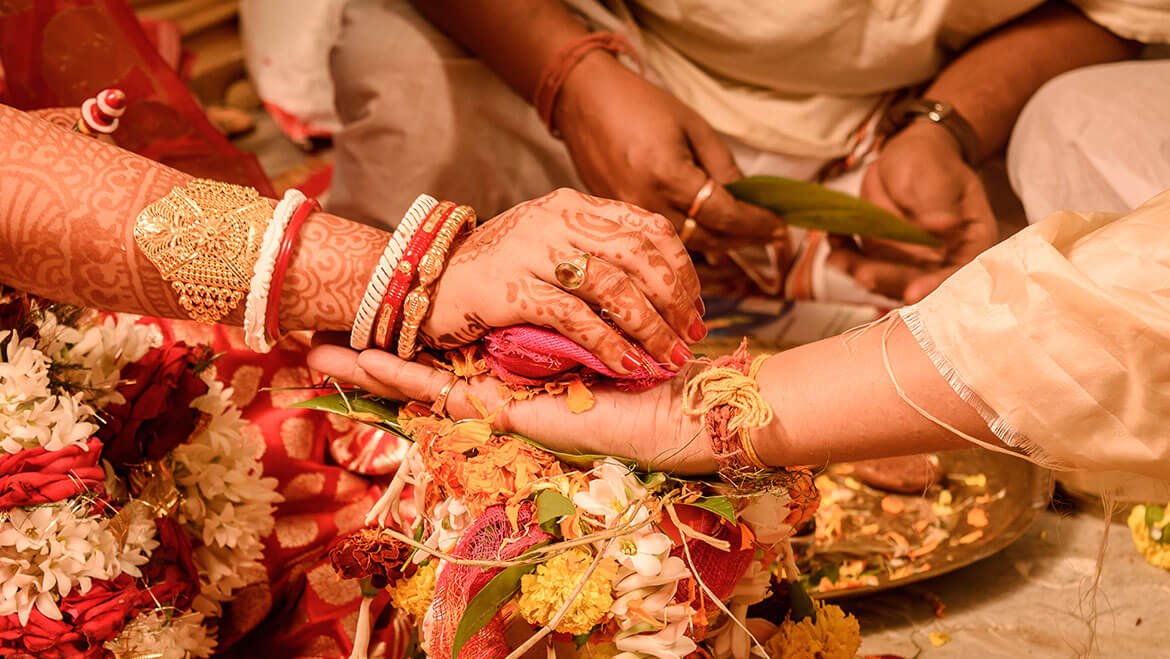
Let us today explore the various major customs and rituals of a Bengali wedding. Alongside we will also guide on the outfits for each occasion of this 4-5 day long wedding.
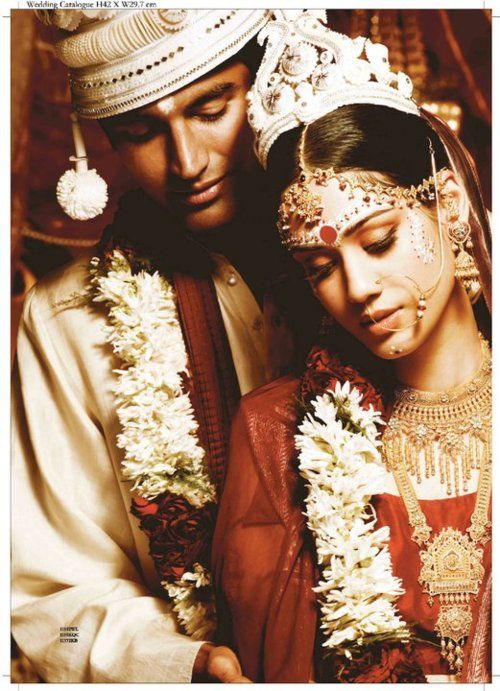 Buy Custom Made Bridal & Groom Wear
Buy Custom Made Bridal & Groom Wear
This will help you to conceptualize how a Bengali wedding is immensely colorful and vibrant. It will also tell you how to dress perfectly if you ever get invited to a wedding of a Bengali friend. Let us start with the pre-wedding rituals.
Pre Wedding Customs & rituals in Bengali Wedding
1. Adan Pradan – Finalization of the Date
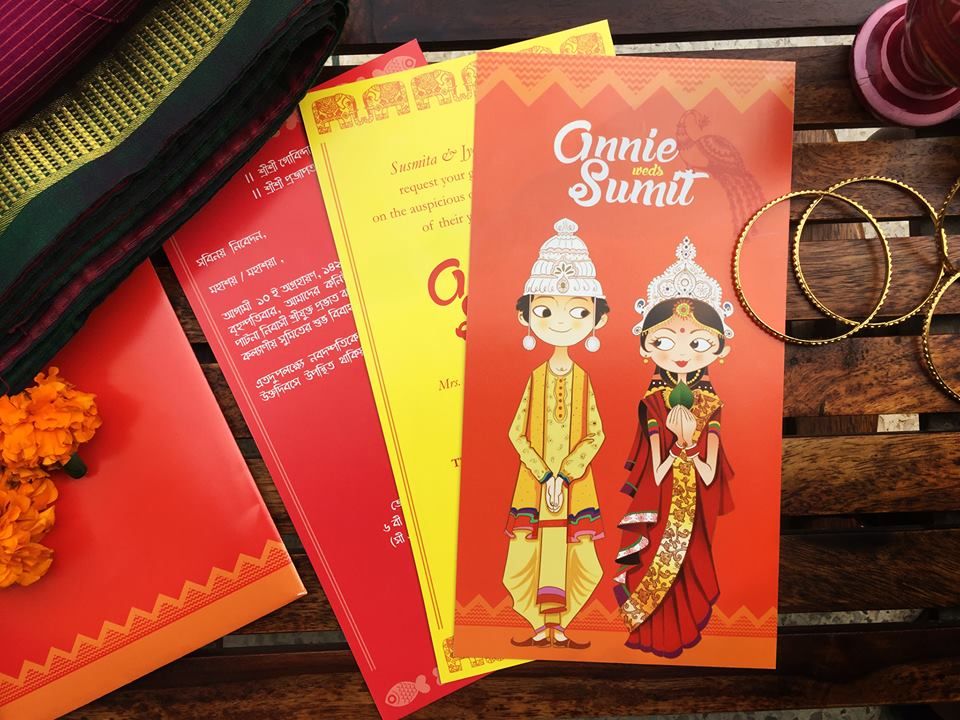
The extravagant Bengali wedding starts with the custom of Adan Pradan in which both the families of the bride and the groom meet to finalize the date of the wedding. This happens after the bride and the groom have liked each other and agreed to get married. Priests accompany the families as an auspicious date needs to get decided according to the Hindu panjika. Some families also exchange gifts to mark the beginning of the new relationship.
Since this is a very private affair, where usually no guests are invited, the bride and the groom usually opt for simple ethnic outfits. The outfits should not be too plain as it is still an important occasion nor should they be extremely fancy.
2. Ashirbaad – The Blessing
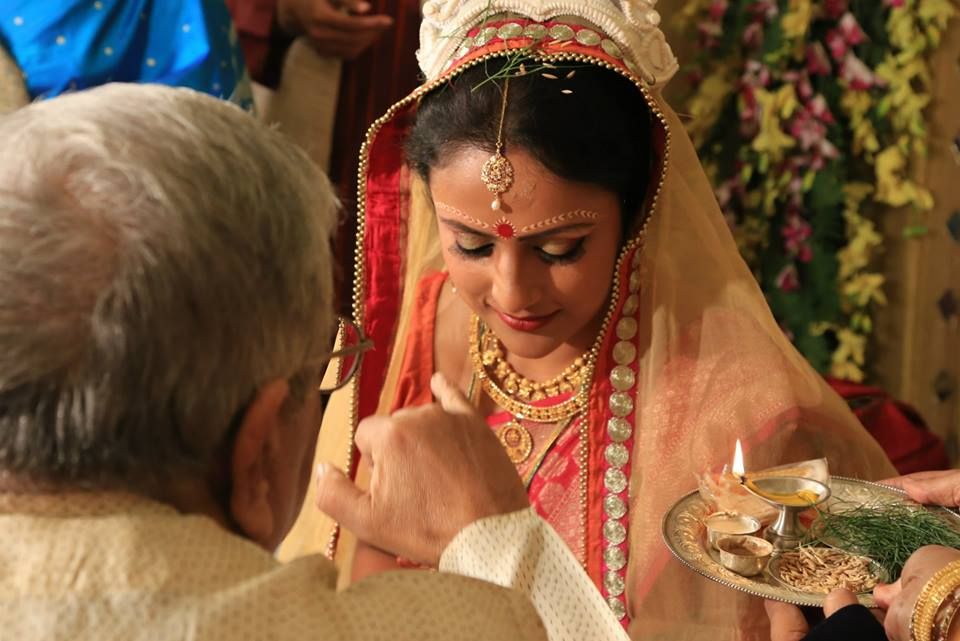 Buy Custom Made Bridal & Groom Wear
Buy Custom Made Bridal & Groom Wear
For this ritual, the family of the groom visits the bride to shower her with blessings and gifts as a symbol of her inclusion in their family. The same is done by the bride’s family for the groom too on a different date. The bride and the groom are blessed with dhan or rice with the husk and dubyo or trefoil leaves. The gifts include gold jewellery, family heirlooms etc. The bride is expected to wear this jewellery on the wedding day. On this occasion, close friends and relatives join in and the ritual is followed by a grand lunch.
Dressing up for the occasion can be tricky as you can’t go there as a guest in your casual-wear. You need to wear a saree or a kurta meant for a day-time wedding function. The bride wears a good silk saree or a dhakai jamdani.
Some families prefer not to spend two extra days for the ashirbaad. Those families conduct this ritual on the wedding day itself, right before the rituals of the wedding night are scheduled to commence.
3. Aiburo-bhaat – The Last Meal as Unmarried
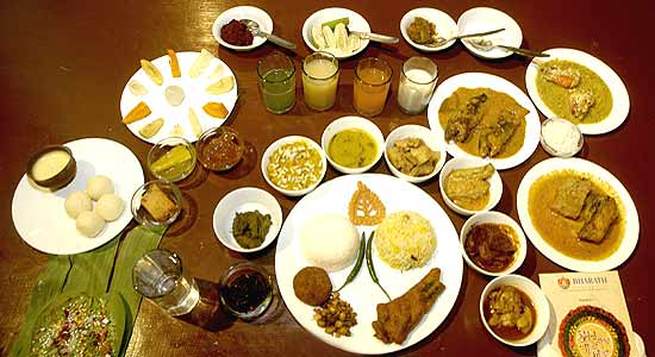
This ritual involves a meal comprising of the favourite dishes of the person about to get married. This ritual takes place in the respective households of the bride and the groom on the afternoon of the day before the wedding. Aiburo means not married and bhaat means rice. So it translates as ‘the last rice taken by the person while the person is still not married’. This is usually a big affair and marks the start of the celebrations of a Bengali wedding. The Bengali bride and groom need to designate specific outfits for this occasion. Most preferred colors involve red, pink, gold etc for the bride. The groom wears a kurta and pajama. If you are a guest at an aiburo-bhaat, you may opt for a Bengal cotton sareewith zari border and motifs. Men should dress up in kurta-pajama.
4. Nitbor & Nitkone – Companions to the Bor and Kone
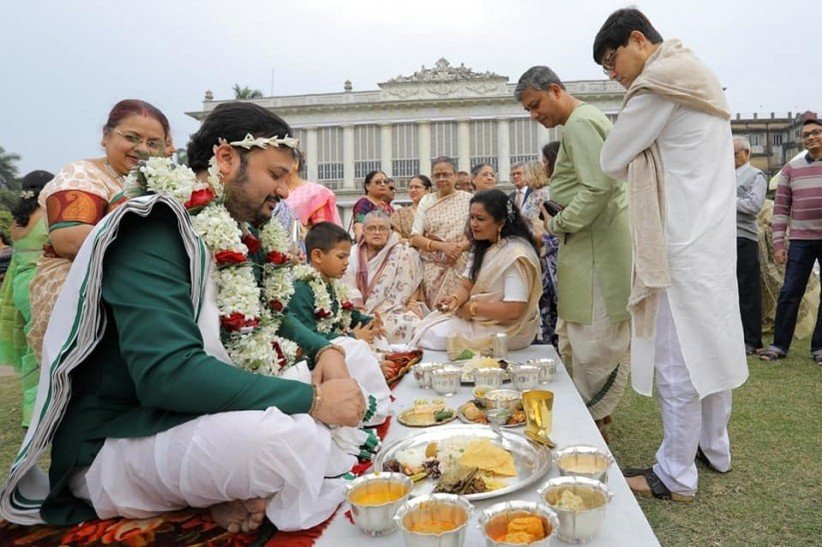
This is a unique custom associated with the Bengali wedding. Bor means groom and kone means bride. The nitbor is a boy child who shall accompany the groom from the aiburo-bhaat till the wedding. The same is done for the bride by a little girl from the bride’s family. She is called the nitkone.
There is no known religious significance behind this custom but it becomes a source of immense joy for the girl and the boy who get chosen for these roles. Not only do they get to accompany the two most important people during the whole affair but are also showered with gifts.
5. Shankha-Pola – Sign of Marriage
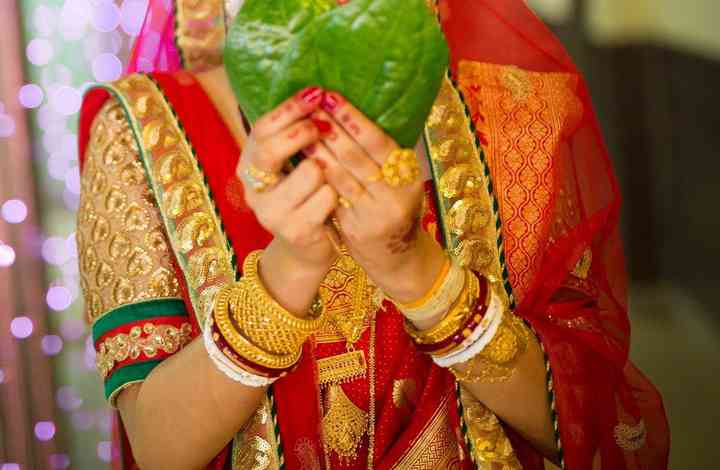 Buy Custom Made Bridal & Groom Wear
Buy Custom Made Bridal & Groom Wear
Apart from sindoor, a Bengali married woman usually wears bangles on both wrists made up of conch shell – shankha – and red coral –pala. A bride usually starts wearing these from the eve of the wedding. The custom is a homely one where her close family is only present.
6. Ganga Nimantran – Inviting the River Ganga
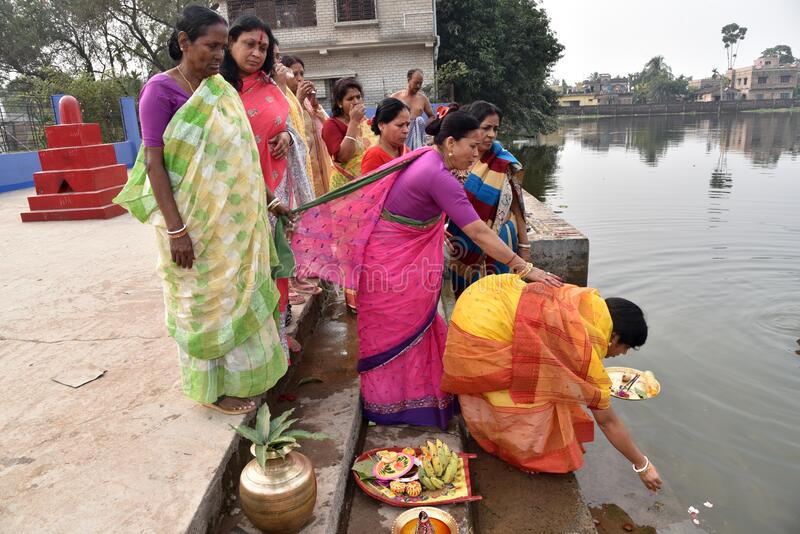
Another unique ritual in a Bengali wedding is that of inviting the River Ganga. Some members of the family march towards the river while blowing conch shells. They carry items like a betel leaf, betel nut, haldi or turmeric and they also light a diya. Those who live far away from the Ganga can do the same at a nearby pond or lake.
Variations of the customs mentioned here may are definitely present. Customs may differ from family to family. Some families have the ritual of odhibash where the groom’s mother is sent symbolic gifts from the bride’s family on the eve of the wedding. Others celebrate pati-patra – a variation of adan pradan – where the families write the date and other important decisions associated with the wedding on two sheets of paper – one for each family.
Wedding Morning rituals in Bengali Wedding
7. Dodhi Mangal – The Day Break Meal
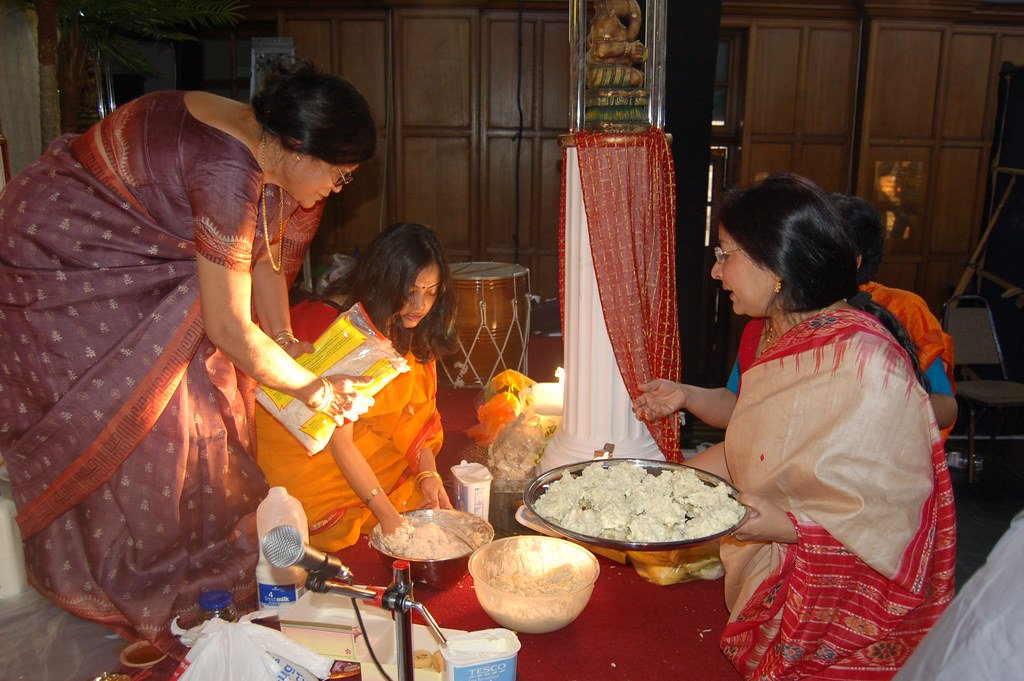 Buy Custom Made Bridal & Groom Wear
Buy Custom Made Bridal & Groom Wear
The rituals of a Bengali wedding start before day-break. The bride and the groom are fed soaked flattened rice or chuda mixed with mishit doi or sweet yoghurt. This is the only proper meal that the groom and bride will be consuming till they get married. They are not supposed to consume anything except sweets and water.
8. Nandi Mukh – Homage to the Ancestors
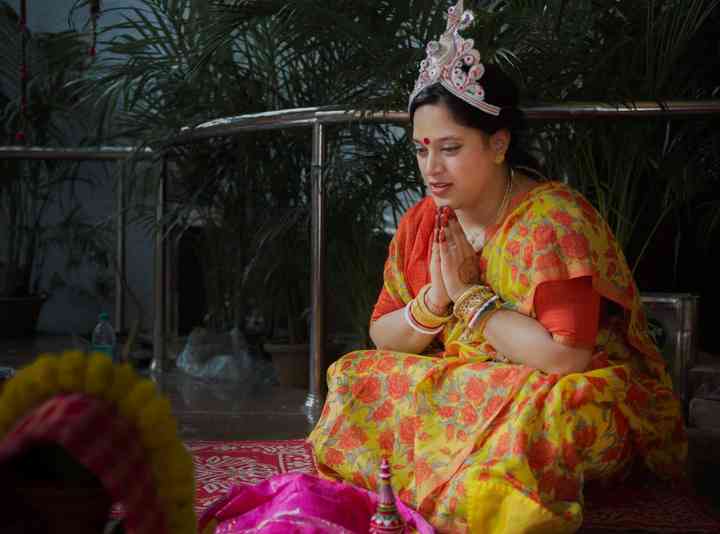
This ritual involves paying homage and respect to the forefathers of the family of the bride as well as the groom. The bride and the groom sit with the eldest male member of their respective families to perform the ritual. It is a Vedic ritual that requires the involvement of a priest. The bride wears a new cotton saree for this ritual.
9. Gaye Holud – Smearing of the Purifying Turmeric
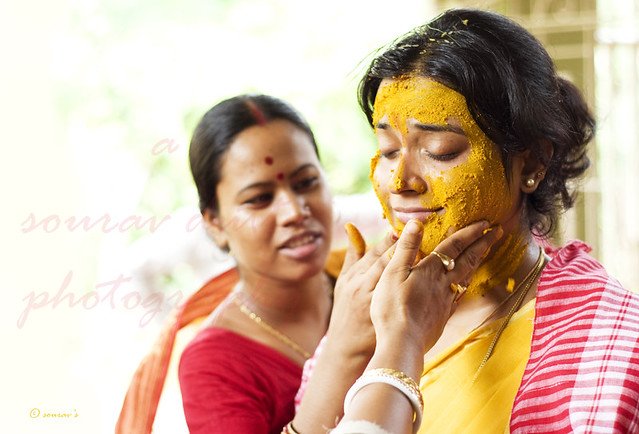 Buy Custom Made Bridal & Groom Wear
Buy Custom Made Bridal & Groom Wear
This ritual of a Bengali wedding is similar to the ritual of haldi performed in north India, though there are some differences. Gaye Holud is first performed at the home of the groom at a specific auspicious time. Some of the same pasted turmeric that has been smeared on the groom’s skin is brought to the house of the bride by some members of the groom’s family. Along with that a new saree, usually a cotton one in yellow and red, is also brought for the bride. She changes into this saree and only then does the ritual of gaye holud start at the bride’s house. The fun part is that the members of the family also start smearing haldi on each other!
If you are invited for a gaye holud function, make sure you don’t wear a very expensive saree as it might get damaged by the haldi, checkout Haldi Ceremony dresses. It is preferable that you wear colors like red or yellow. Most Bengali women wear such sarees on the wedding morning. They also wear alta – a red liquid – used to create designs on the feet. The bride wears alta on her palms too. Bengali Hindus do not have the ritual of Mehendi but nowadays many brides prefer to wear mehndi over alta on their palms, checkout Mehendi ceremony dresses.
After gaye holud, the bride or groom takes a bath using water that has been brought from a nearby river or waterbody by a newly married couple from the respective families, early in the morning.
10. Tatta – The Gifts
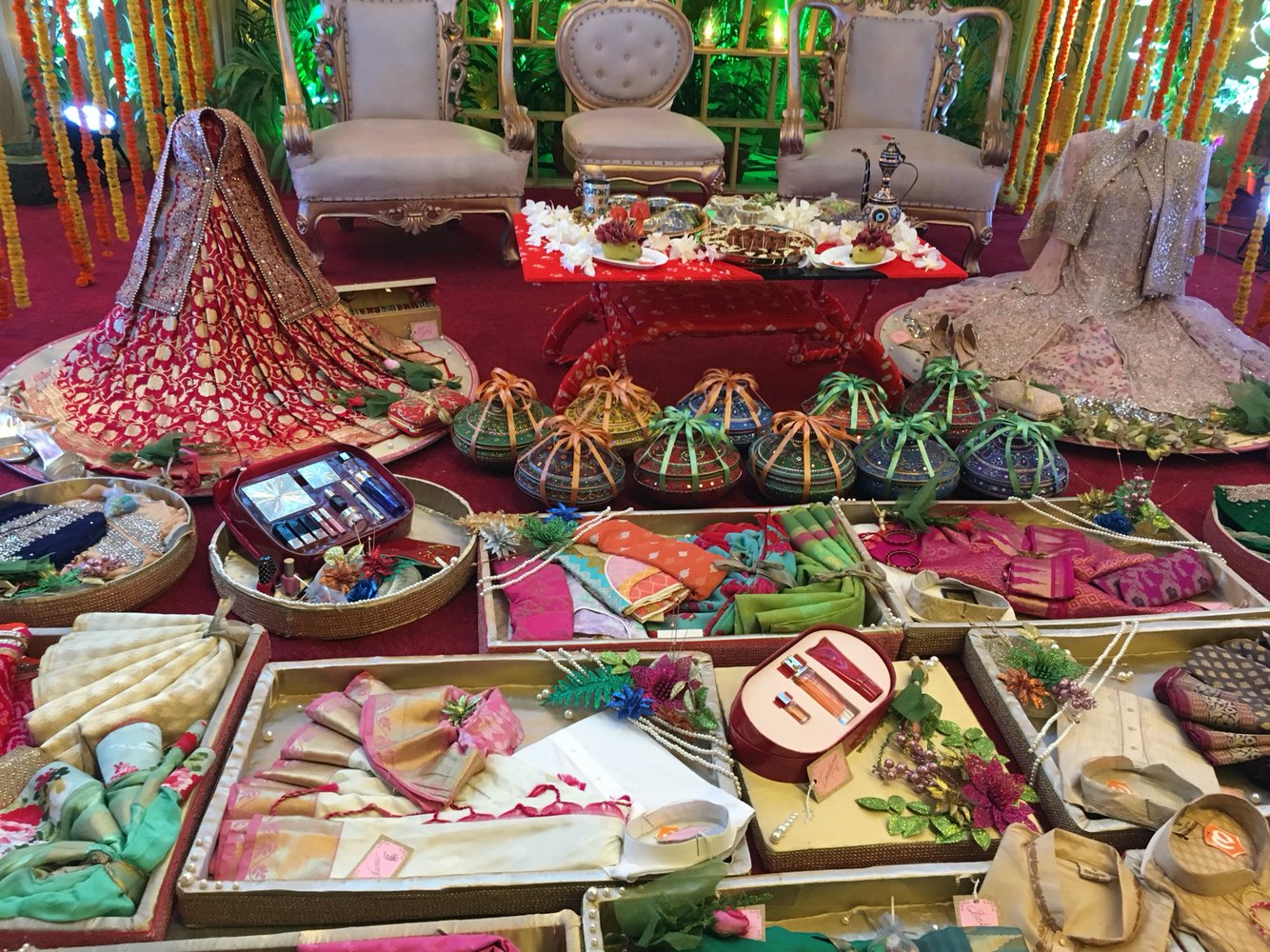
Bengalis exchange gifts for the wedding. These gifts include different kinds of ethnic clothes, cosmetics, toliletries and accessories for the bride and groom, clothes for the family members, clothes and toiletries for the nitbor and nitkobe, sweets, a whole fish etc. These usually come in decorated trays.
It is customary that friends and family spend days before the wedding packing and decorating these trays. The groom’s family sends these gifts to the bride’s family along with the haldi. So this is called the ‘gaye holud er tatta’. The bride’s family sends these gifts on the day of the boubhat.
Wedding Evening Rituals
11. Bor Boron – Welcoming the Groom

All is calm at the house of the Bengali bride, till her groom arrives along with the bor jatri – his friends and family. The groom comes in a separate decorated car. The ritual is conducted by the bride’s mother who blesses the groom and welcomes him by lighting a lamp on a bamboo winnow or kula. She does aarti andfeeds him sweets and water.
12. Patta Bastra – The Sacred Attire
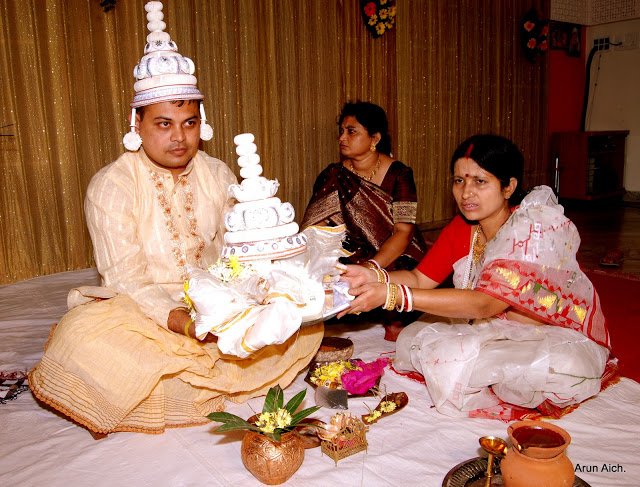
The main Bengali weddingrituals take place under the chhadnatola or wedding mandap, which is a decorated square area or stage . Before the rituals start the groom needs to change into specific attire called the patta bastra which includes a dhoti and along piece of cloth which the groom is supposed to wrap around the upper part of the body. An elderly member of the family of the bride hands it over to the groom.
13. Subho Drishti – The First Auspicious Glance
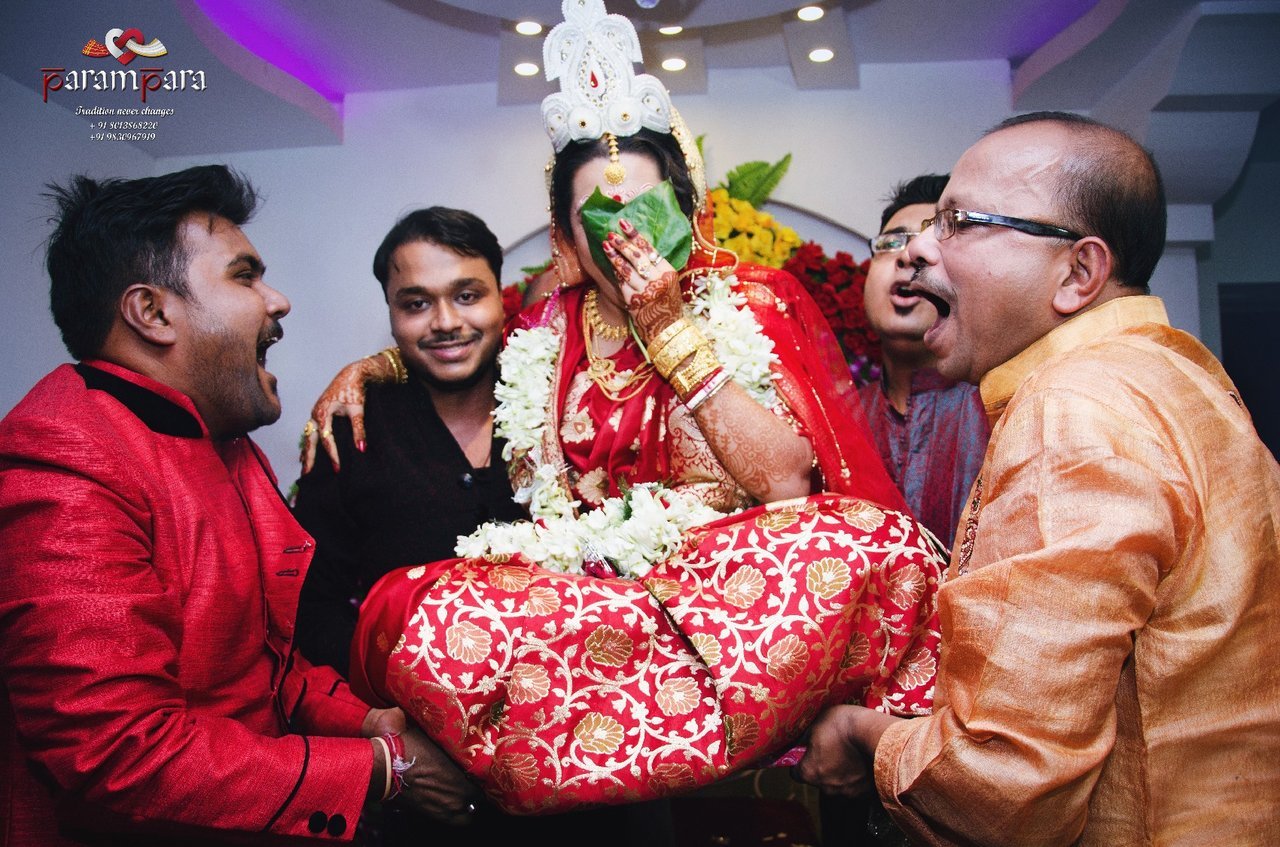
The Bengali wedding rituals start as the bride is brought to the chhadnatola on a pidi or low wooden stool, held by her brothers. She is taken around the groom in seven circles while she covers her face using a betel leaf. Then slowly she moves the betel leaf away from her face and the bride and the groom look at each other for the first time on the wedding day.
14. Mala Bodol – Exchange of Garlands
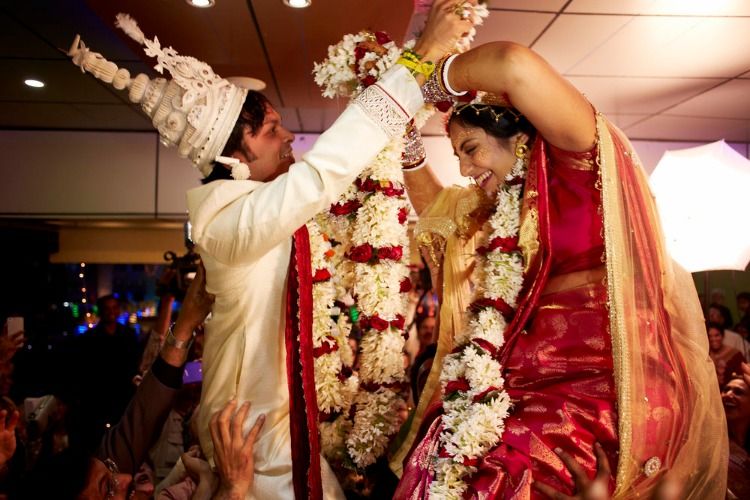 Buy Custom Made Bridal & Groom Wear
Buy Custom Made Bridal & Groom Wear
Next the bride and the groom exchange garlands, thrice. A fun custom is performed at this time when friends lift the bride up so that it gets difficult for the groom to put the garland around her neck.
15. Sampradan – The Induction of the Bride into the Groom’s family
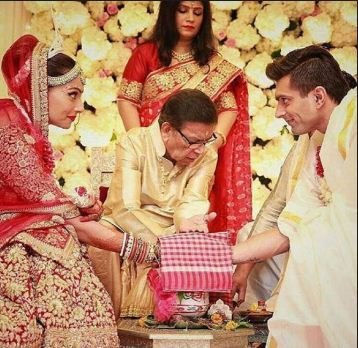
Sampradan is the Bengali counterpart of the Kanyadaan. An elderly male member of the family or the bride’s father performs the ritual which signifies handing over the daughter to the man who is about to become her husband. It also signifies a formal induction into the groom’s family and gotra. The priest chants Vedic mantras and the hand of the bride is placed on the hand of the groom.
16. Yagna – The Sacred Fire
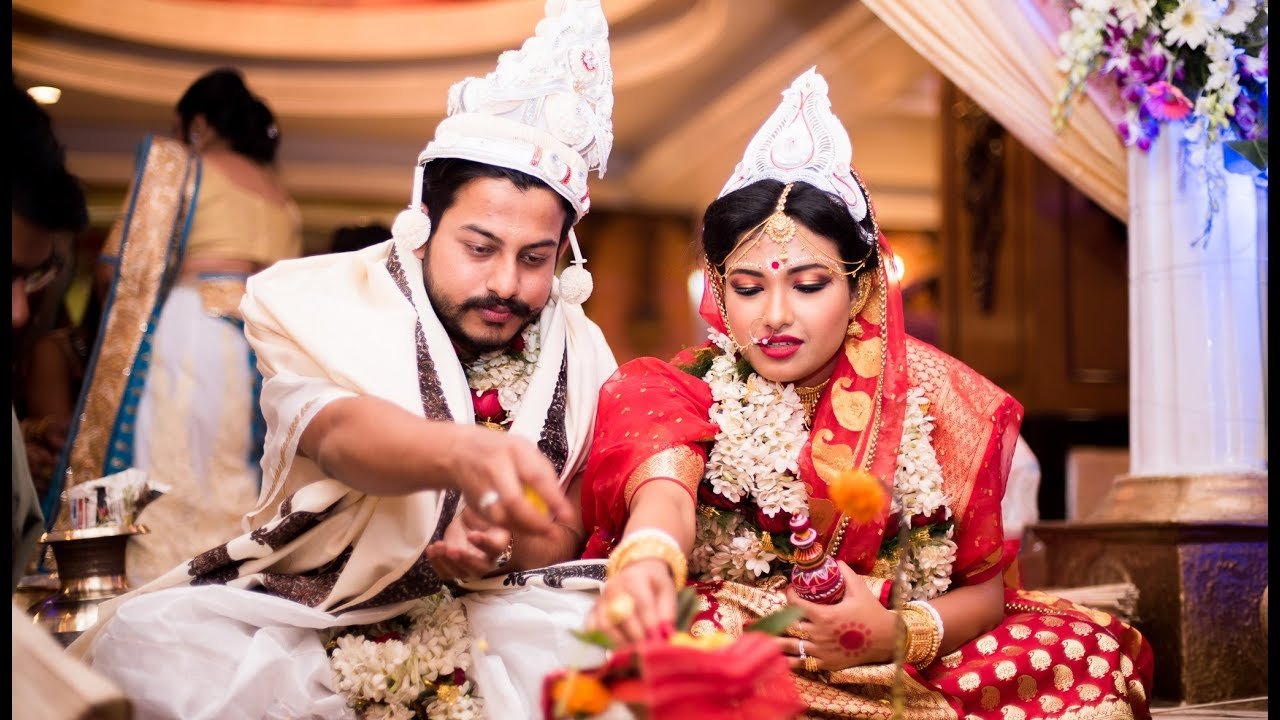
Now, the bride and the groom sit next to each other while the priest helps them perform the yagnain front of the sacred fire. The ritual of a Bengali wedding is performed to make the God of Fire – Agni – a witness to the sacred union.
17. Saptapadi – The Seven Important Steps
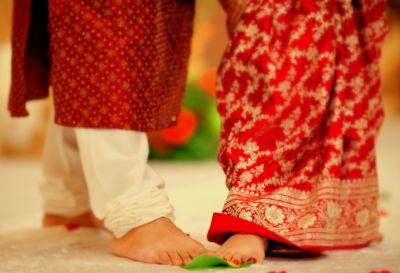
Though this ritual may sound similar to Saat Phere, it is not so! For this ritual, the bride steps on seven betel leaves placed on the ground one after the other. The groom follows while moving a nora with his feet as they move forward. A nora is a cylindrical stone used to ground spices.
Before this ritual the bride’s saree pallu is tied to the patta bastraof the groom. This tie-up is called gatchhora.
18. Anjali – The Offering
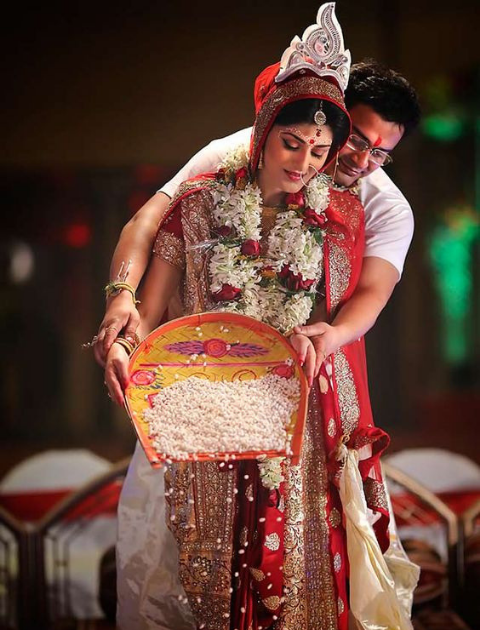 Buy Custom Made Bridal & Groom Wear
Buy Custom Made Bridal & Groom Wear
An offering of puffed rice is made to the sacred fire. The bride’s brother hands her the puffed rice and the groom holds the bride’s hands from behind her while both of them slowly pour the offering into the yagna fire.
19. Sindoor Daan – Smearing the Vermillion

The marriage rituals conclude with the groom smearing vermillion or sindoor on the hair parting of the bride. The groom may use a kunke or rice measuring utensil, a darpan or mirror, a coin or a finger ring for the purpose – it depends on his family customs. Immediately after the sindoor daan, the bride’s head and face is covered with a new saree from the groom’s family. This saree is called the lajja-bastra.
It goes without saying that dressing on the wedding night would not be an easy task for anyone. A Bengali bride is almost always seen in a red Benarasi brocade saree, gold jewellery and a golden veil. She wears her hair in a bun adorned with flowers.
The groom wears tussardhoti and kurta before changing into the patta bastra. Bengali men, attending the wedding wear kurtas with pajamas or dhotis. A sherwani can seldom be spotted. Bengali women, be it the mother or sister of the bride or a wedding guest, all wear sarees. A lehenga is almost absent.
Post Wedding Rituals in Bengali Wedding
20. Bashor Jaaga– The Interactive Session
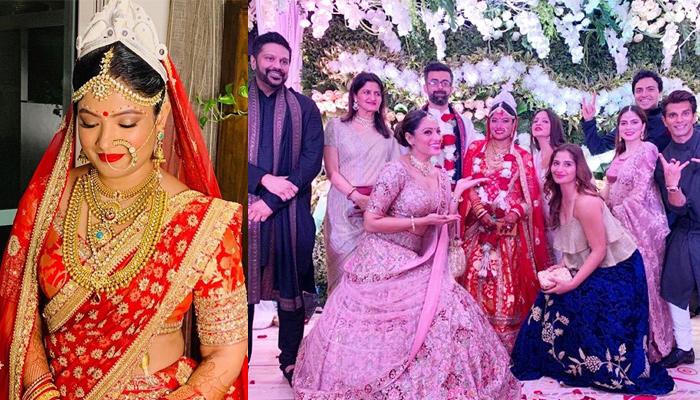
After the Bengali wedding ceremony, the bride and the groom take dinner with the close relatives. Then they enter a room called the bashor ghor. The sisters of the bride guard the door of the bashor ghor and they demand money from their new brother-in-law in exchange of letting him enter the room. Only after he agrees and an amount is decided, he gets the opportunity to enter the bashor ghor.
Then begins an interactive session followed by cultural activities like singing of songs etc. The bride, the groom and his friends sit on one side and the young members of bride’s family and her friends sit on the other side. Different kinds of games are also played.
21. Biday – The Farewell
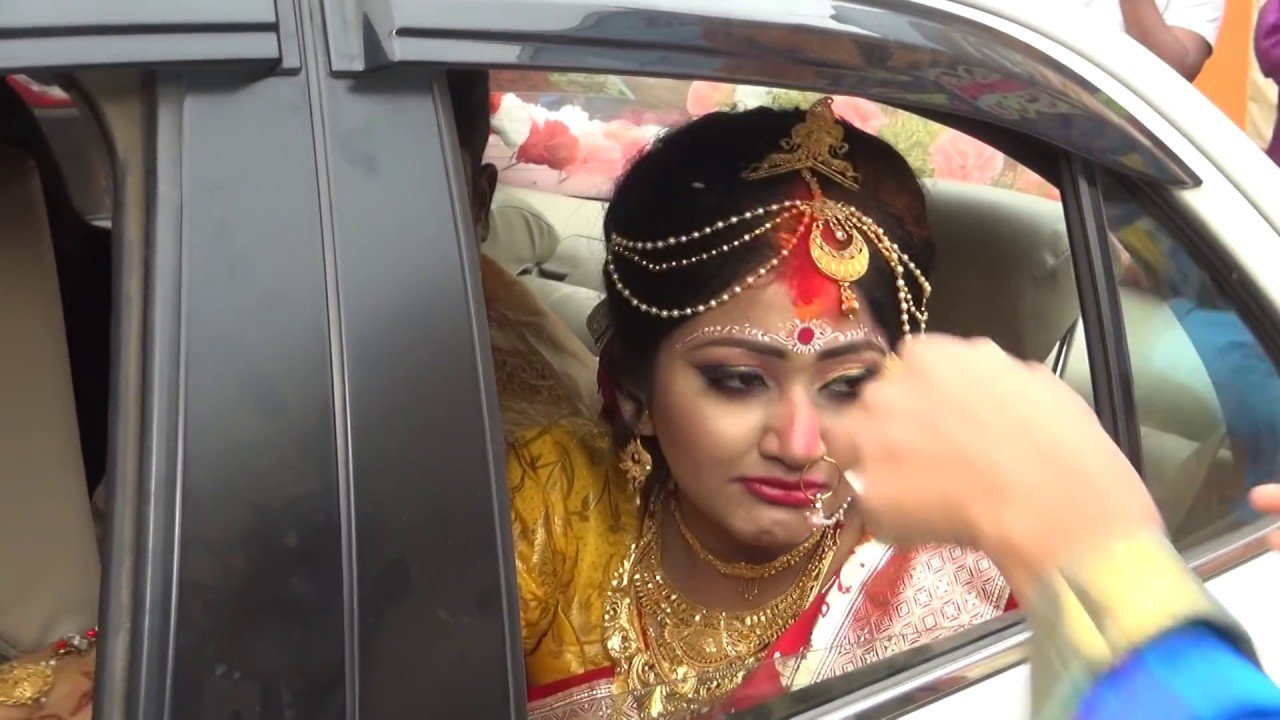
The time of biday depends on customs specific to families. While some brides leave the paternal home early the next morning after the wedding, some families take the bride home only after sunset. This is a bittersweet moment when the bride bids farewell to her home and family. The bride and groom touch the feet of all elderly members of the bride’s family. An important part of the ritual is the bride placing some rice on the pallu of her mother just before she leaves.
22. Bodhu Baran – Welcoming the Bride Home
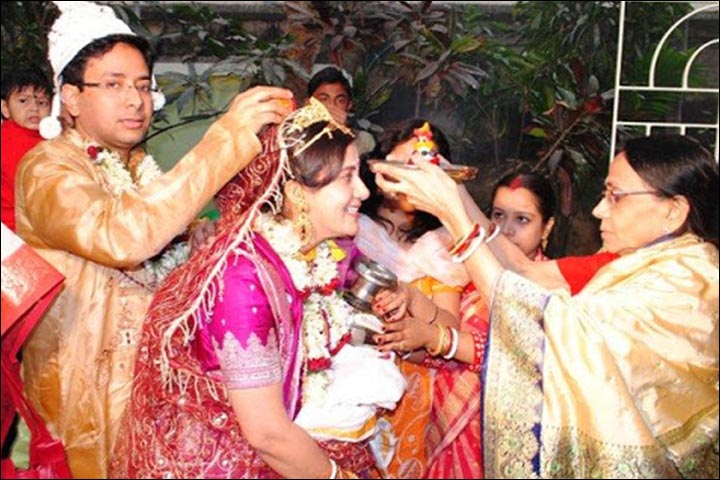
As the bride steps into her new home she is first supposed to see milk being boiled in the kitchen. The rising milk that flows out of the vessel is symbolical of a household where everything is in surplus.
While the mother-in-law welcomes her with an aarti, she is required to stand with a kalash filled with waterin one hand and a particular kind of fish in the other. Then she steps on a vessel filled with alta and milk and then step on a white cloth and walk on it. The footprints on the white cloth are symbolical of the steps of Goddess Lakshmi.
23. Kaal Ratri – The Night of Separation
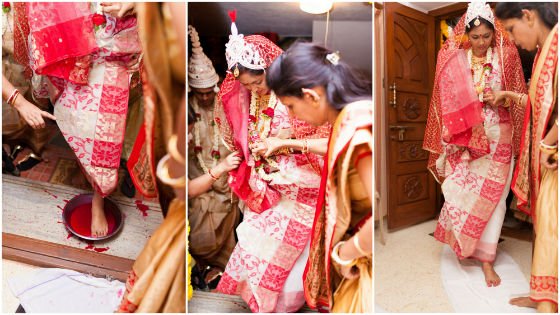
After the bride is welcomed into the family, she and the groom seek blessings from all elders who shower them with gifts. The mother-in-law gives her a special gift – the loha – a special kind of bangle made with iron. She is supposed to wear this on her left wrist always. The loha is a very important symbol of marriage in the Bengali Hindu community. Once this ceremony is over, the bride and groom are required to stay separate. This ritual is also unique to a Bengali wedding. They are not even allowed to see each other. This night is called kaal ratri.
24. Bou-bhat – Acceptance of Responsibility
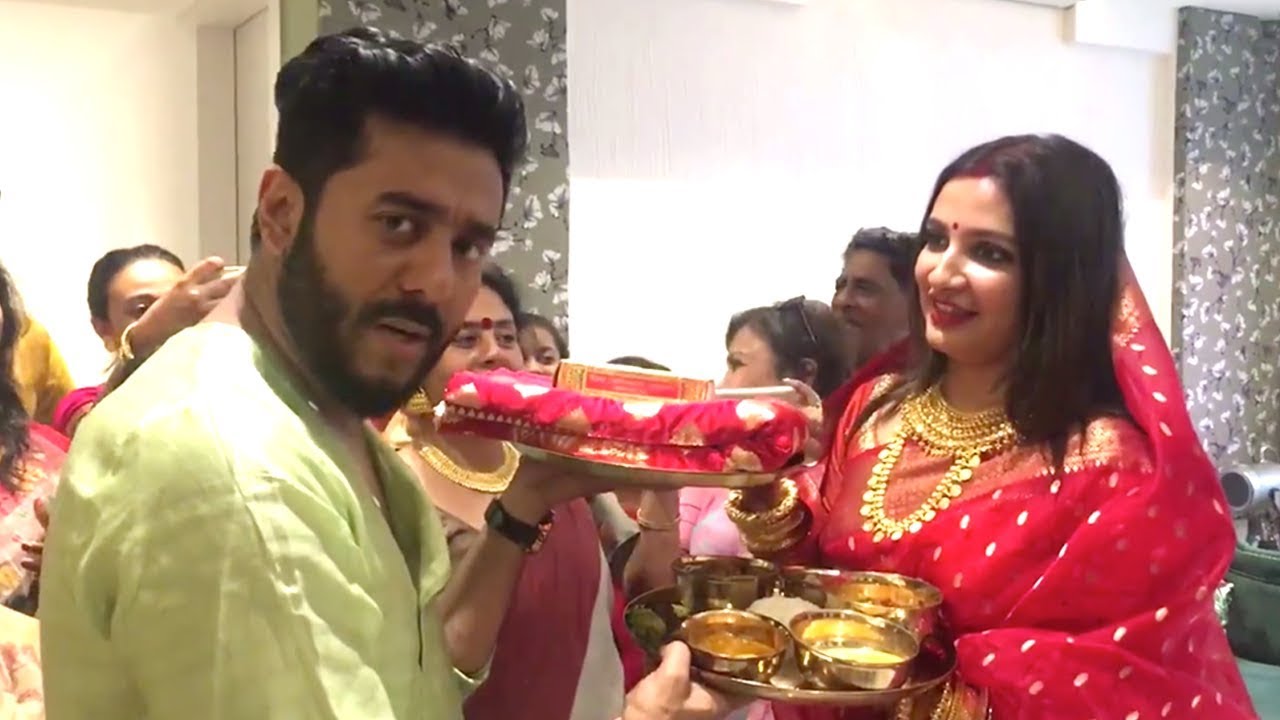
The next day the bride eats rice cooked in her new household. The groom offers the bride a plate full of rice and other food items. He also offers her a new saree and tells her that from now on he will take the responsibility of her food and clothes. The bride then serves payesh,that iskheer, or ghee-rice to all other members of the family.
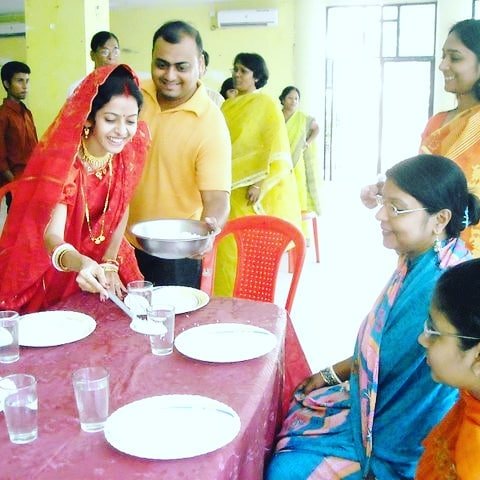
The groom’s family arranges a big reception party on the evening of the bou-bhat, where they invite all their friends and family. The bride’s family are the guests of honor for the reception. They arrive together and are called the kone jatri. It is at this time that they bring the tatta from their side. Along with everything else, the bride’s family is also supposed to bring a tray of floral ornaments for the bride and a bowl of khoi or puffed rice and sweet yoghurt.
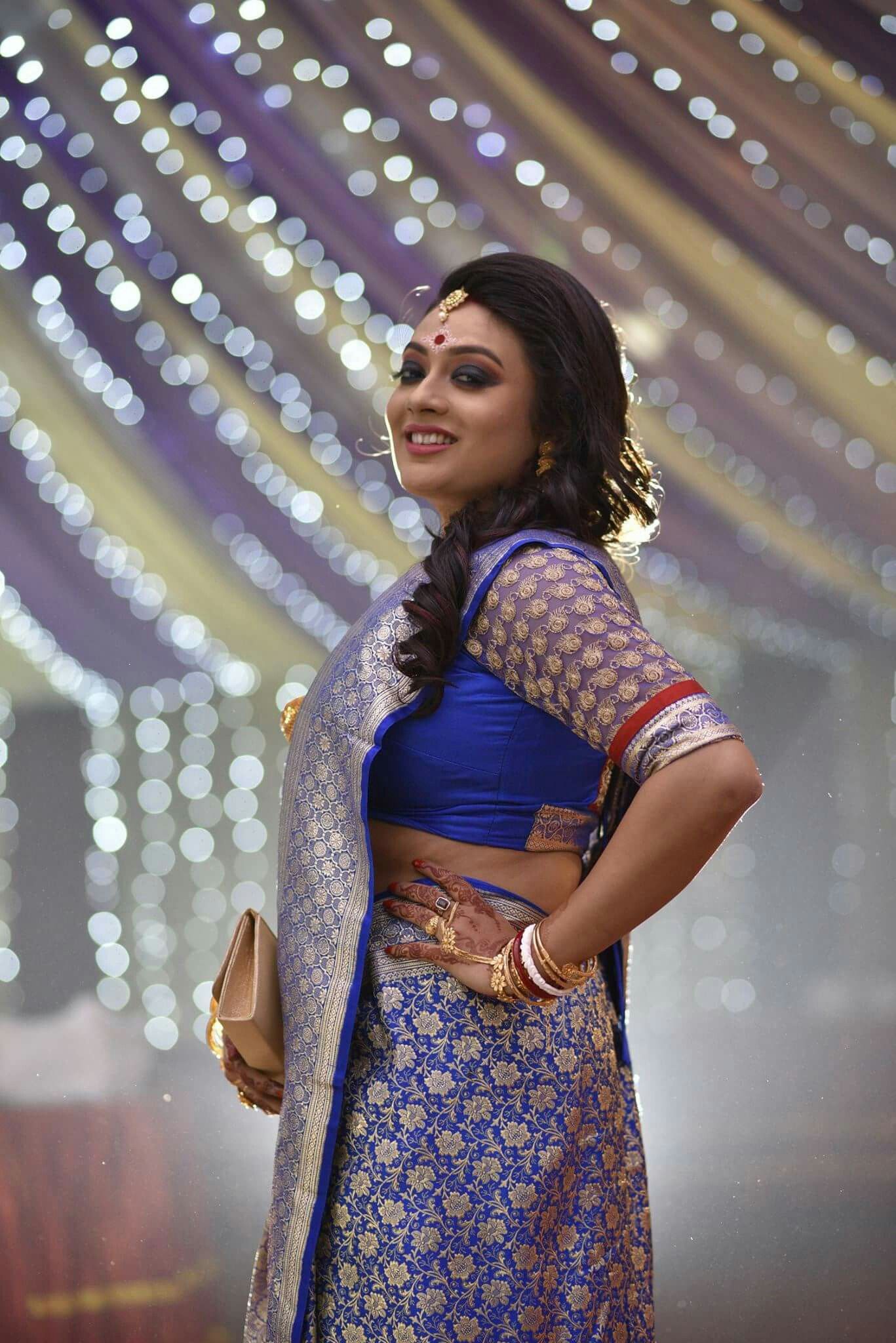 Buy Custom Made Bridal & Groom Wear
Buy Custom Made Bridal & Groom Wear
The bride wears sarees for this occasion too but nowadays brides are breaking the rules and wearing lehengas too. As a guest, you can experiment with your clothing for the reception. While majority of the guests were ethnic clothes, some also wear western dresses or ethnic gowns etc
25. Phool-sajya–The Night of Union
After the guests leave and the bride and the groom take their dinner with the groom’s family, comes the time for the last custom of a Bengali wedding. Phool-sajya translates to a bed of flowers. The bed in the room of the newly married couple is decorated with flowers for the occasion. The bride changes into a cotton saree and wears floral jewellery and the groom changes into a cotton kurta-pajama.
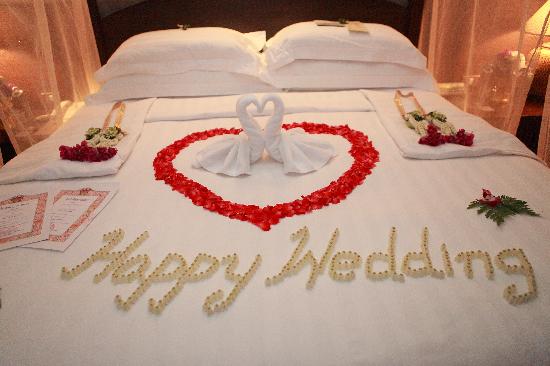
All these clothes and floral jewellery come as part of the tatta brought by the bride’s family. Then they eat the khoi or puffed rice with sweet yoghurt, also brought by the bride’s family. After this, the new couple is allowed to spend the night together.
Final Word – Bengali Wedding Culture and Traditions
A Bengali wedding has numerous rituals but each of them is of some social significance. If you ever get to be a part of a Bengali wedding, we canpromise you that you will be having the time of your life. We have also guided you on the attires associated with each function. Check out our website for exclusive options for Custom Made Indian Wedding Wear:
Refs: Bengalis





